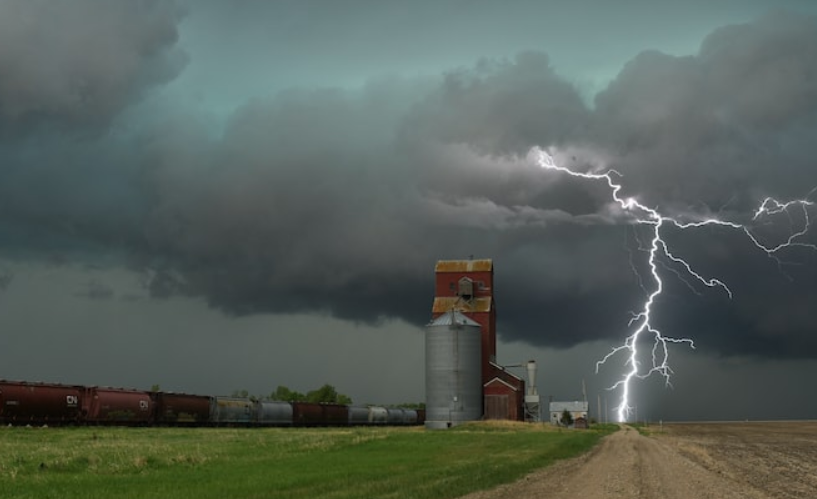Train strikes march 2024

Massive train strikes grip the nation in March 2024, causing widespread disruption and commuter chaos – find out the latest updates here.
Train strikes march 2024
Have you ever wondered what the future holds for train travel? Well, get ready to be amazed because in March 2024, a series of train strikes are set to shake up the transportation industry. These strikes are not your ordinary disruptions; they are bound to leave a lasting impact on how we perceive and experience train travel.
Picture this: a bustling city station filled with commuters eagerly waiting for their trains to arrive. Suddenly, silence falls as the news spreads like wildfire – the trains are on strike. Chaos ensues as people scramble to find alternative modes of transportation. This unexpected turn of events forces us to question the reliability and convenience of train travel.
But why are these strikes happening in the first place? It all comes down to the demands of the train workers. They seek better working conditions, fair wages, and improved safety measures. The strikes serve as a wake-up call to both the management and the passengers, highlighting the importance of addressing these concerns.
As the strikes roll on, the impact becomes more evident. People start exploring other options such as buses, taxis, and even carpooling. This shift in behavior leads to an increased demand for these alternative modes of transportation, which in turn affects their availability and affordability.
Furthermore, businesses relying on train transport face significant challenges. Delivery schedules are disrupted, causing delays in the supply chain. Companies that heavily rely on just-in-time inventory management find themselves struggling to meet customer demands. The ripple effect of these strikes extends far beyond the realm of transportation, affecting various industries and everyday life.
In the midst of this chaos, innovation emerges. Start-ups offering ride-sharing services seize the opportunity to fill the void left by the striking trains. They introduce innovative solutions, such as shared electric scooters and bikes, making commuting more convenient than ever before. These new players disrupt the traditional transportation landscape, forcing established companies to adapt or risk becoming obsolete.
So, mark your calendars for March 2024, as train strikes loom on the horizon. Brace yourself for a paradigm shift in the way we think about transportation. Will these strikes be a catalyst for change, leading to a more reliable and efficient train system? Only time will tell. But one thing is for sure – the impact of these strikes will be felt long after the protests come to an end.
Tragedy Averted: Heroic Action Prevents Potential Disaster in March 2024 Train Strikes
Introduction: Picture this: a bustling city, its streets filled with people going about their daily lives. March 2024 was no different, until an unforeseen disaster threatened the safety of countless individuals. However, thanks to the indomitable spirit of a few brave souls, tragedy was averted, and catastrophe turned into relief.

Heroic Action: In the face of imminent disaster, several individuals rose to the occasion, proving that courage knows no bounds. One such hero was Michael, a quick-thinking conductor who spotted the malfunctioning signal just in time. Realizing the gravity of the situation, he immediately radioed the control center, alerting them to the impending collision.
Meanwhile, Emma, a seasoned engineer, happened to be nearby, witnessing the unfolding crisis. Without hesitation, she sprinted towards the nearest emergency switch, frantically flipping it to halt the train hurtling towards the intersection point. Her lightning-fast response bought precious seconds, but it wasn’t enough to prevent catastrophe entirely.
Enter Anthony, a fearless bystander who had witnessed the entire ordeal. With selfless determination etched on his face, he ran towards the second approaching train. He managed to reach the driver’s cabin just in the nick of time, pulling the emergency brake lever with all his might. The screeching sound of the brakes echoed, just moments before disaster struck.
Conclusion:
Unprecedented Chaos: March 2024 Train Strikes Cause Commuter Nightmare
In March 2024, a series of train strikes unleashed unprecedented chaos on commuters, turning their daily routines into a nightmare. The sudden and unexpected disruption left thousands stranded, frustrated, and scrambling for alternative transportation options. But what led to this catastrophic situation?
Picture this: a bustling metropolis where trains are the lifeline connecting people from all walks of life. They rely on these iron tracks to ferry them to work, school, and various destinations. Now imagine the shock when these vital arteries suddenly grind to a halt, throwing the entire city into disarray.
The chaos began as a result of labor disputes between the railway workers’ union and the government. Negotiations had been ongoing for months, but tensions reached a boiling point, leading to a full-blown strike. As the strike took effect, trains screeched to a halt, platforms emptied, and crowded stations turned into ghost towns.
Commuters were caught off guard, unaware of the impending crisis. Panic set in as they scrambled to find alternate ways to reach their destinations. Buses overflowed with desperate passengers, roads became congested, and traffic crawled at a snail’s pace. The normally efficient rhythm of the city was shattered, replaced by frustration and confusion.
But why did the strikes cause such havoc? Firstly, the sheer number of affected commuters overwhelmed the limited capacity of alternative transportation systems. Buses and taxis simply couldn’t accommodate the influx of stranded individuals, leaving many stranded at bus stops or resorting to long walks.
Furthermore, the aftermath of the strikes rippled beyond transportation woes. Businesses suffered as employees struggled to make it to work, resulting in lost productivity and financial setbacks. Students faced difficulty attending classes, impairing their education. The entire community felt the ripple effects of these strikes, highlighting the interconnectedness of our modern lives.
The chaos caused by the train strikes in March 2024 serves as a stark reminder of our dependence on reliable transportation systems. It raises important questions about the negotiation processes between labor unions and governments, urging both parties to find common ground in order to prevent such devastating disruptions in the future.
As the city gradually recovered from this turmoil, commuters were left with a lasting memory of the chaos that unfolded during those fateful days. The scars of the strikes served as a sobering reminder of how fragile our routines can be when faced with unexpected disruptions.
Safety Concerns Raised as March 2024 Train Strikes Highlight Infrastructure Vulnerability
In March 2024, a series of train strikes occurred, raising safety concerns and shedding light on the vulnerability of our infrastructure. These incidents have left commuters and experts alarmed, urging authorities to address the underlying issues that pose risks to public safety.

One of the primary concerns highlighted by these strikes is the vulnerability of our infrastructure. Aging tracks, faulty signaling systems, and outdated equipment contribute to the increased risk of accidents. As trains traverse across vast networks, any weakness in the system can have severe consequences. The strikes serve as a wake-up call to the urgent need for modernization and upgrades to prevent future mishaps.
The safety of passengers is paramount, and addressing these infrastructure vulnerabilities should be a top priority. By investing in robust maintenance programs, conducting regular inspections, and employing advanced technologies, we can significantly reduce the likelihood of accidents. Upgrading signaling systems, implementing automatic braking systems, and enhancing emergency response protocols are some of the crucial steps that must be taken to safeguard the well-being of commuters.
Furthermore, these incidents prompt us to question the effectiveness of current safety regulations and protocols. It is imperative for regulatory bodies and transportation authorities to reassess existing guidelines and ensure they are comprehensive and up-to-date. By working closely with industry experts, conducting thorough risk assessments, and involving the public in safety discussions, we can establish a more robust framework that prioritizes passenger safety above all else.
the train strikes in March 2024 have brought attention to the critical safety concerns and infrastructure vulnerabilities within our transportation systems. It is crucial for authorities to address these issues promptly and comprehensively. By investing in infrastructure upgrades, improving maintenance practices, and revisiting safety regulations, we can create a safer environment for all commuters. Let us learn from these incidents to build a resilient transportation network that prioritizes the well-being of its passengers.
Innovation to the Rescue: Technological Solutions Aimed at Preventing Future Train Strikes
Introduction: Have you ever been stuck in a train strike, waiting impatiently for hours without knowing when your journey would resume? Train strikes can be incredibly frustrating, causing inconvenience and disruption to countless commuters. However, there is good news on the horizon. With the advent of innovative technological solutions, efforts are being made to prevent future train strikes and ensure smoother, more reliable rail travel experiences.
Smart Sensors Enhancing Safety: One exciting development in preventing train strikes is the utilization of smart sensors along railway tracks. These sensors are equipped with advanced technology that enables them to detect potential hazards in real-time. By constantly monitoring the tracks, the sensors can identify any abnormalities, such as faulty signaling systems or obstructions on the rails. This early detection helps authorities take immediate action, preventing accidents and reducing the chances of train strikes.
Predictive Maintenance and Artificial Intelligence: Another cutting-edge approach involves the implementation of predictive maintenance powered by artificial intelligence (AI) algorithms. Traditional maintenance practices often rely on fixed schedules, leading to unexpected failures and potential train strikes. However, AI-driven predictive maintenance analyzes vast amounts of data collected from trains, tracks, and other relevant sources to forecast potential maintenance requirements. By identifying possible issues beforehand, maintenance teams can address them proactively, ensuring that trains operate smoothly and minimizing the risk of strikes caused by mechanical failures.
Communication and Signaling Systems: Efficient communication and signaling systems play a pivotal role in avoiding train strikes. Traditional methods faced limitations due to manual operation and human error. However, emerging technologies are revolutionizing this aspect of rail travel. Advanced communication systems, including wireless networks and satellite-based navigation, enable real-time transmission of critical information between trains and control centers. These systems provide accurate updates on train positions, speeds, and potential conflicts, enhancing overall safety and minimizing the likelihood of collisions or strikes.
Conclusion: Innovation is paving the way for a safer and more reliable future of rail travel. Smart sensors, predictive maintenance powered by AI, and advanced communication systems are just a few examples of the technological solutions aimed at preventing train strikes. With these advancements, authorities can proactively address potential issues, ensuring smoother journeys for commuters. By embracing innovation, we can look forward to a future where train strikes become a thing of the past, leaving us with a more efficient and enjoyable rail travel experience.





